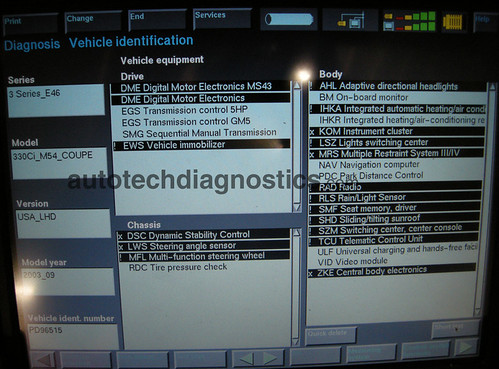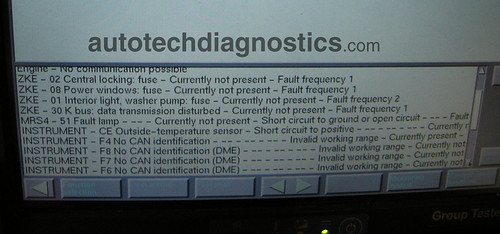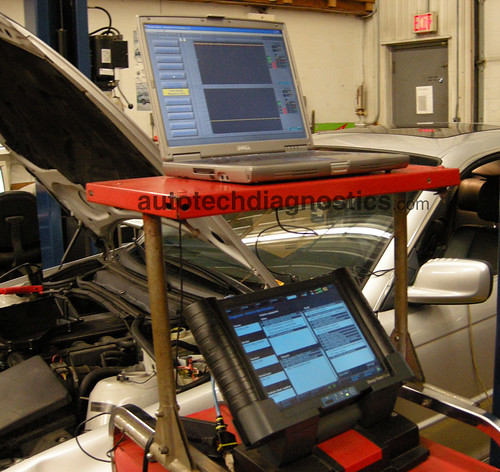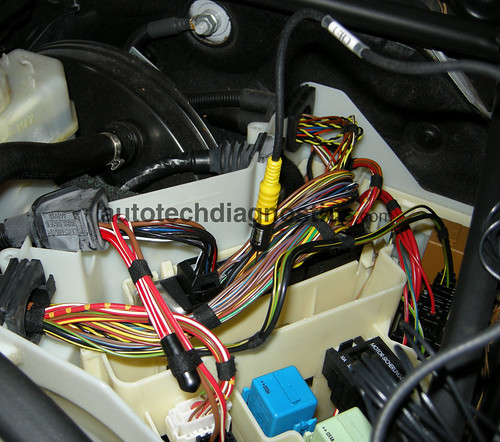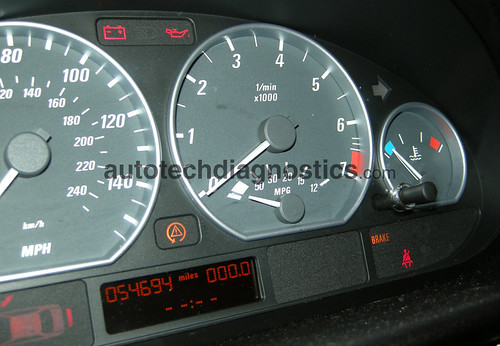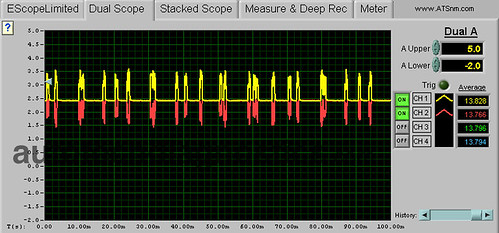More infor but my car is still down....
Functional description of bus systems
The bus system is a group signal line system on which the exchange of data or messages takes place. A bus makes it possible to connect a central module (master) with a large number of independent control units. All units are connected in parallel to the bus line.
The diagnosis bus(D-bus, TXD link) transmits data between the DIS and a control unit. The control unit to be subject to diagnosis is selected by sending a diagnosis telegram to the control unit address. In this way, on request of the tester, the control unit can convey status information and the contents of the fault code memory or activate a control unit output.
The data flow of the indicator instruments and audio system mainly takes place via the instrumentation bus (I-bus) . For instance, the data for the check control module, on-board computer, IKE display, multi-information display, navigation, radio and the telephone are transmitted on this bus.
The body bus (K-bus) is responsible for the data exchange of telegrams that are required throughout the system. For instance, the ZKE and the IHK are connected to the K-bus. The K-bus is technically identical to the I-bus.
The general module is the central module of the peripherals bus (P-bus) . Peripheral modules interconnected by means of the P-bus are installed in locations where the scope of wiring is particularly extensive, e.g. doors. The functions of the ZKE (power windows, central locking, etc.) are controlled via the P-bus. The data are sent from the ZKE via the P-bus to the corresponding peripheral module from which the individual components are activated.
The IHK stepper motors are controlled via the motor bus (M-bus) . The IHK sends telegrams that activate the stepper motor with the corresponding address.
Addressing conditions of control units
In principle, all control units in the vehicle can be addressed via the diagnosis function when the ignition is switched on.
The busses are capable of exchanging information among each other via the IKE control unit (instrument cluster electronics) . It contains the electronic control for the entire signal conditioning function and calculating the data from the instrument cluster and on-board computer. The IKE is the bus master for the I-bus/K-bus. It serves as a gateway for the D-bus that converts the telegram format of the I/K-bus to the format of the D-bus. It transmits and receives data from all modules and control units connected to the IKE via the bus systems. If, for example, the independent park ventilation function is activated at the MID, this telegram must be routed via the I-bus, IKE and K-bus to the IHK that then carries out the corresponding function. In this case, only data are allowed to pass through that, according to the address, are designated for the other bus.
The Body Bus (K-Bus)
The body bus (K-bus) in the E38 is, in the same way as the diagnosis bus (D-bus), the instrumentation bus (I-bus) and the peripheral bus (P-bus), a serial data link between control units.
The connected control units exchange information via the K-bus, e.g. sensor values or lamp status.
Design and function of the K-bus
The following control units can be connected to the K-bus:
•FBZV: External radio remote control for central locking system
•GM 3: General module of ZKE3
•IHKA/IHKR: Automatic climate control
•IKE: Instrument cluster electronics
•LWR: headlight vertical aim control
•FGB: Rear compartment blower
•AIC: Automatic interval control
•EWS: Electronic vehicle immobilization, as of 09/96 on K-bus.
Identification features of K-bus control units
The automatic heating/air conditioning control system (IHKA) can be recognized by separate operation of the air distribution on the driver/passenger side whereas the air distribution in the heating/air conditioning control system (IHKR) is adjusted by a central control wheel. In the heating and air conditioning control system (IHKR), the air distribution is adjusted by means of a central control wheel.
The automatic headlight vertical aim control (LWR) is installed only in conjunction with xenon headlights. In contrast to the manual headlight vertical aim control system, it features no control for vertical adjustment of the headlights.
The external radio remote control for the central locking systems (FBZV) is installed as a separate control unit only up to 9/95. As of 9/95, the radio remote control feature is integrated in the general module.
Function of the K-bus
The functional principle of the K-bus is comparable to that of a telephone conference circuit. All participants are interconnected via the K-bus. Every participant can both receive as well as transmit messages via the K-bus.
The K-bus is designed as a single-wire bus system, i.e. the K-bus is a wire system which is used to transmit and receive messages.
The high data transfer rate on the K-bus (approx. 10,000 bit/sec) enables distribution of messages between the control units virtually without delay.
Diagnosis with K-bus control units
DIS diagnosis telegrams are sent to the electronic instrument cluster via the diagnosis bus (D-bus). From the electronic instrument cluster (IKE) the diagnosis telegrams are routed to K-bus control units. The response telegrams of the K-bus control units are sent back also via the IKE to the DIS.

















